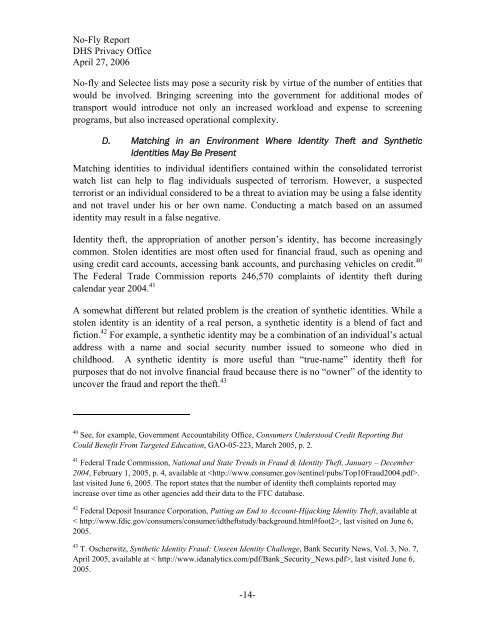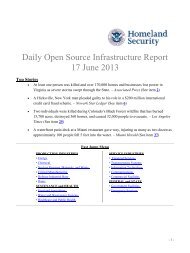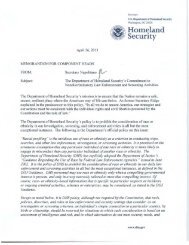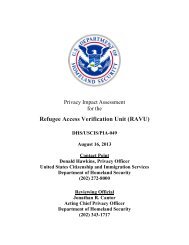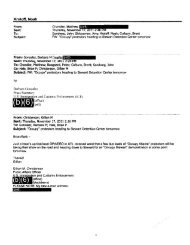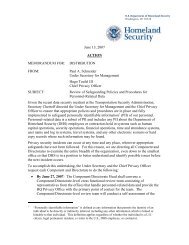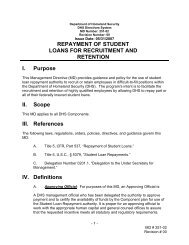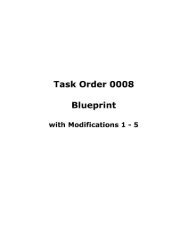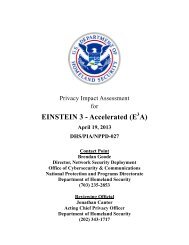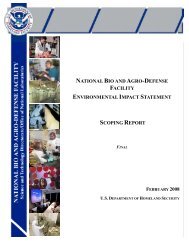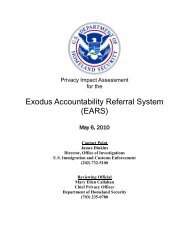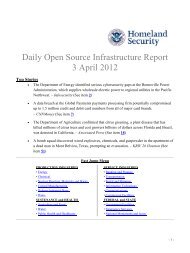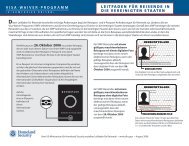Report: No Fly - Homeland Security
Report: No Fly - Homeland Security
Report: No Fly - Homeland Security
Create successful ePaper yourself
Turn your PDF publications into a flip-book with our unique Google optimized e-Paper software.
<strong>No</strong>-<strong>Fly</strong> <strong>Report</strong><br />
DHS Privacy Office<br />
April 27, 2006<br />
<strong>No</strong>-fly and Selectee lists may pose a security risk by virtue of the number of entities that<br />
would be involved. Bringing screening into the government for additional modes of<br />
transport would introduce not only an increased workload and expense to screening<br />
programs, but also increased operational complexity.<br />
D. Matching in an Environment Where Identity Theft and Synthetic<br />
Identities May Be Present<br />
Matching identities to individual identifiers contained within the consolidated terrorist<br />
watch list can help to flag individuals suspected of terrorism. However, a suspected<br />
terrorist or an individual considered to be a threat to aviation may be using a false identity<br />
and not travel under his or her own name. Conducting a match based on an assumed<br />
identity may result in a false negative.<br />
Identity theft, the appropriation of another person’s identity, has become increasingly<br />
common. Stolen identities are most often used for financial fraud, such as opening and<br />
using credit card accounts, accessing bank accounts, and purchasing vehicles on credit. 40<br />
The Federal Trade Commission reports 246,570 complaints of identity theft during<br />
calendar year 2004. 41<br />
A somewhat different but related problem is the creation of synthetic identities. While a<br />
stolen identity is an identity of a real person, a synthetic identity is a blend of fact and<br />
fiction. 42 For example, a synthetic identity may be a combination of an individual’s actual<br />
address with a name and social security number issued to someone who died in<br />
childhood. A synthetic identity is more useful than “true-name” identity theft for<br />
purposes that do not involve financial fraud because there is no “owner” of the identity to<br />
uncover the fraud and report the theft. 43<br />
40 See, for example, Government Accountability Office, Consumers Understood Credit <strong>Report</strong>ing But<br />
Could Benefit From Targeted Education, GAO-05-223, March 2005, p. 2.<br />
41 Federal Trade Commission, National and State Trends in Fraud & Identity Theft, January – December<br />
2004, February 1, 2005, p. 4, available at .<br />
last visited June 6, 2005. The report states that the number of identity theft complaints reported may<br />
increase over time as other agencies add their data to the FTC database.<br />
42 Federal Deposit Insurance Corporation, Putting an End to Account-Hijacking Identity Theft, available at<br />
< http://www.fdic.gov/consumers/consumer/idtheftstudy/background.html#foot2>, last visited on June 6,<br />
2005.<br />
43 T. Oscherwitz, Synthetic Identity Fraud: Unseen Identity Challenge, Bank <strong>Security</strong> News, Vol. 3, <strong>No</strong>. 7,<br />
April 2005, available at < http://www.idanalytics.com/pdf/Bank_<strong>Security</strong>_News.pdf>, last visited June 6,<br />
2005.<br />
-14-


